Podcast: Play in new window | Download | Embed
In this episode we take a look at David Fincher’s cult classic “Fight Club” and discuss:
- the title sequence of “Fight Club”;
- lighting in the bar scene;
- the transitions;
- voiceover;
- camerawork & composition;
- and much more!
“Filmmaking isn’t if you can just strap on a camera onto an actor, and steadicam, and point it at their face, and follow them through the movie, that is not what moviemaking is, that is not what it’s about. It’s not just about getting a performance. It’s also about the psychology of the cinematic moment, and the psychology of the presentation of that, of that window.” – David Fincher
Film Analysis (spoilers):
Let’s dive into a few things that are fairly simple, but perhaps interesting to just point out as an exercise. We’ll begin with:
practical lights.
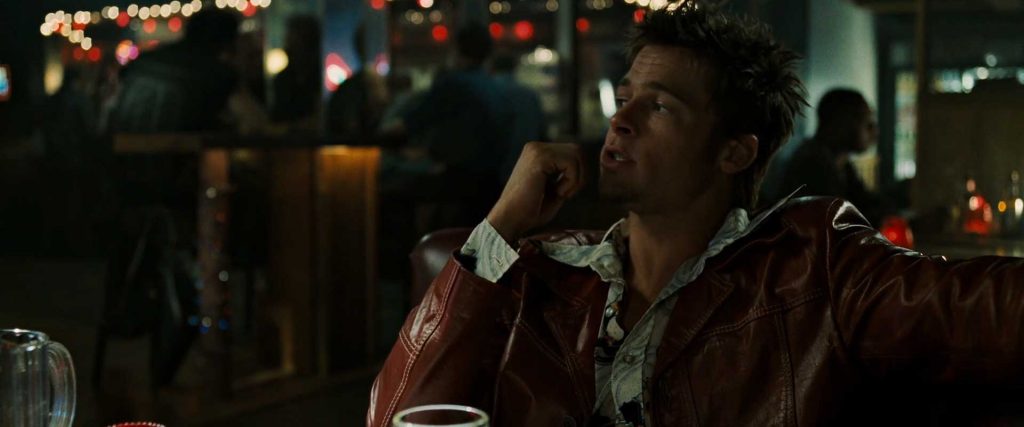
Let’s look at all the lights in just this frame, Tyler Durden’s frame, and see how many different light sources there are. Candles on the table behind him, a refrigerator(?) in the back, some kind of light in the hallway that’s shining on the wall which gives some contrast to Brad Pitt’s head (in addition to his rim lighting), then you have the lights around the bar that are maybe just Christmas lights, the light behind the bar that’s maybe over the cash register, there’s a table that’s wrapped with perhaps some more Christmas lights that are turned off, the beam next to the table has some little light just beneath the mirror, and the mirror is also reflecting light from some other place in the bar, then there’s some kind of neon sign just on the left edge of the frame and another light just next to it. None of these lights are there by accident.
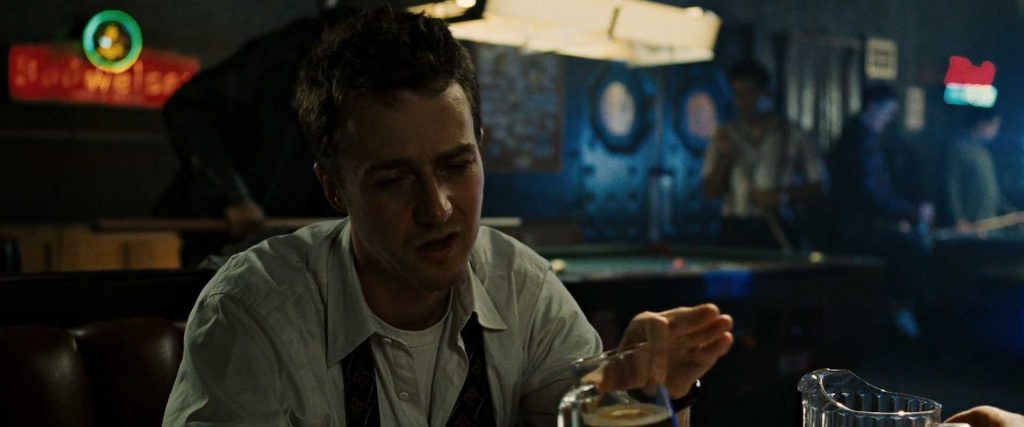
On the Narrator’s side we have three sources of light, two of which are Budweiser signs which further reflect his consumerist ideology. The lighting itself is helping to tell the story of these characters in a very subtle way. Tyler has an excess of lighting coming from everywhere, the sources you can’t really make out, but it’s a wide variety that goes with his untamed inner man dialog. Meanwhile, the Narrator has advertisements for a popular beer, and a pool table for more distraction. So we can see how the lighting can inform the characters, but it also is very useful for motivating the lighting of the characters as well, with so many lighting sources you can basically light your subjects however you want and feel pretty well justified.
Transitions:
This is a simple match cut on action. What I love is how well it works even though it’s completely nonsensical, the lunge that motivates the cut is entirely unmotivated within the scene, the motivation only comes in the second half of the edit! The edit itself is rather simple, we let the Narrator exit frame right and then cut to him entering frame left.
This one is interesting to me because the dolly move we cut to seemingly adds no story value, but instead adds cinematic value and perhaps more importantly helps establish that we’re beginning a new scene, which I suppose gives it some value to the story in the sense that it helps the viewer understand that we have begin a new scene. However, the real story value comes much later as we are being trained to detect scene changes, perhaps to our detriment.
Transportation seems to play a significant role in “Fight Club”. This scene transitions from a bus overtaking Marla to the Narrator on a plane, the directions of these vehicles are going opposite of each other which would indicate Marla and the Narrator’s current paths. What’s more is that Marla being overtaken by a bus seems like light foreshadowing of later in the film when the Narrator steps in front of the bus to put Marla on it for her own safety. That same bus of course provided no escape, and in the end it was the Narrator himself who needed to intervene with Tyler to get on the same path with her — them holding hands and looking in the same direction in the final frames.
Here we go from doing a voiceover to real dialog. It’s an audio cut that’s simple and effectively moves along in the story to a very important scene, the introduction of Tyler Durden, but more on that in a bit.
Here we have a “J Cut” which means we hear the audio from the next scene before we actually see the next scene. In this shot we also have a matching sound effect that undercuts our expectation of hearing papers hitting the desk by delivering the water droplets from the bathtub of the next scene. It adds to this surreal, dreamy, and blended reality that the Narrator is inhabiting thanks to his mental issues such as insomnia which can do a real number on how we perceive everything.
I may be a little liberal by throwing this edit into the “transition” category, but it’s the moment Tyler transitions out of the Narrator’s life, so I’m going with it. The body falls in two stages, Tyler hits his knees, then his whole body hits the floor, except we don’t see his whole body hit the floor, we only hear it. This blends the two realities (real life and the Narrator’s perspective) together for us in a similar way of how Tyler was introduced in the first place. More on that in a moment.
Camerawork & Composition
This is one of those scenes that completely utilizes all the transitions that come before it in order to hide what’s really happening here. It’s also enhanced by the camera work to subtly underline not the importance of the moment, though that’s how the camera language is framed, but the reality shift in the story.
First, we can see that this is actually one long scene that’s broken up with a fantasy plane crash. The scene where Tyler is suddenly there is the exact same scene with the woman. We can tell it’s the same scene not only by the seating arrangement since the Narrator is in the same aisle seat on the same side of the plane, and is wearing the same tie, but the same extras are in the background albeit hidden a little more to help disguise what’s happening, just look at the redheaded woman behind the Narrator. We’ve been conditioned throughout the first 20 minutes of the film to get used to jumping from scene to scene, that reality blends together seamlessly and then using a fantasy plane crash (a fantasy which is metaphorically realized in Tyler Durden himself), the ding of the seatbelt sign which we respond to in the most Pavlovian way as the 20-minute buildup has contained lots of bells as points of transition, that the Narrator wakes up, and also that there is a new person occupying the seat previously held by a woman. We buy into all of this as a means of transitioning to a new scene.
The camera move that reveals Tyler is also significant as we move from a profile shot of the Narrator to reveal Tyler, this is a subliminal hint of things to come. Then we move into a 2-shot of them side by side, facing the same direction. I think it’s tiny details like this that helps the final revelation feel like it’s something that’s been in front of our faces the entire time if we’d only been paying attention. Subtle, but clues are important when going for a huge plot twist. There are, of course, many more clues throughout the film, but the camera language should not be left out when considering the hints.
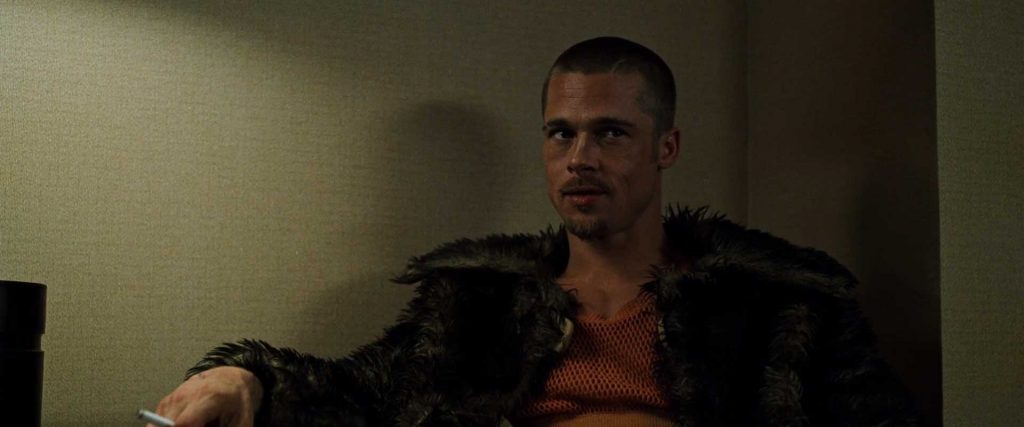
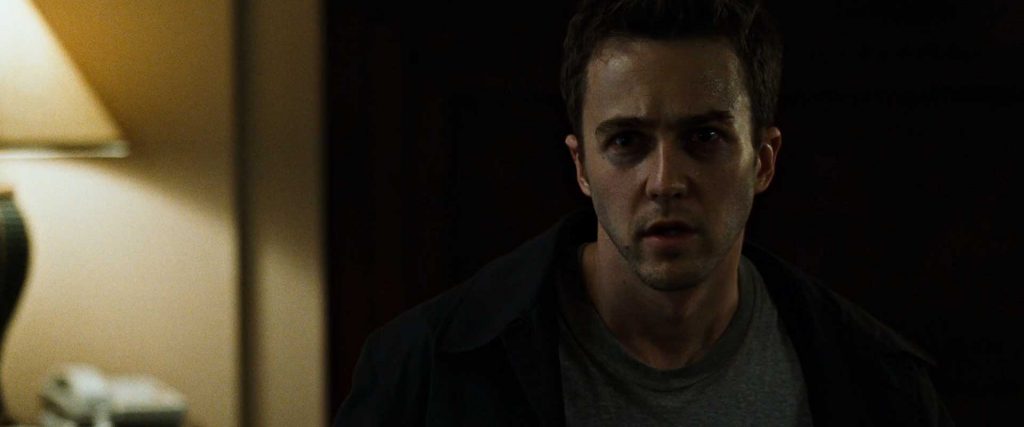
This is the scene that reveals the big plot twist — spoiler warning if you’ve randomly been jumping around this page — when the Narrator realizes that he is Tyler. The composition here places them almost entirely in the same part of the frame, but still maintaining their eye-line with each other, so that cutting back will effectively mean your eyes never move because they are occupying the same space on the screen, the camera language is delivering a literal translation of what’s happening in the scene, that they two personalities inhabiting the same space.
Random Stills
Lastly, I noticed a couple tidbits that amused me.

I found it really funny that the donuts were lit from within the box. Like some kind of donut beacon.
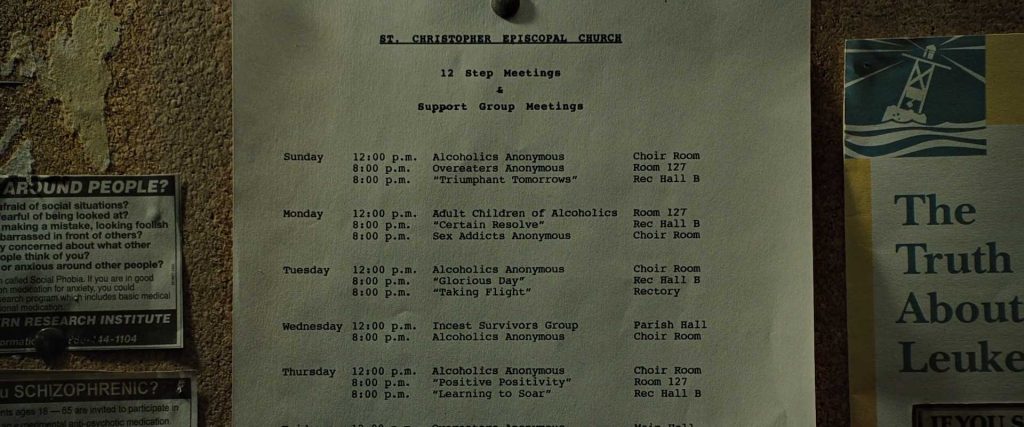
This has probably been covered somewhere before, but the detail of adding a call for Schizophrenics is pretty funny, solid irony.
Notes & References:

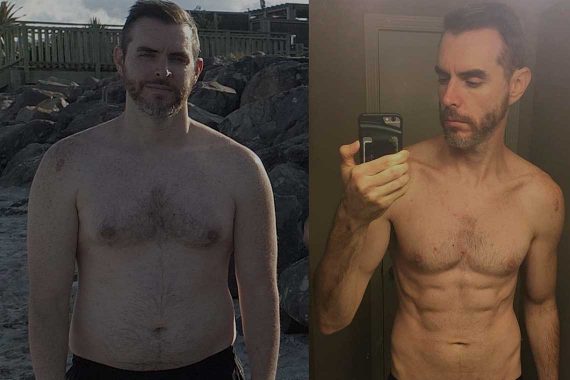
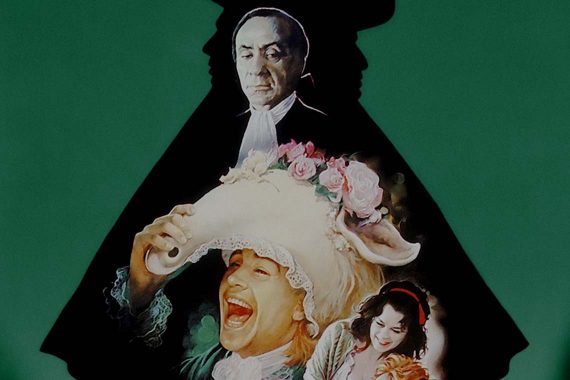
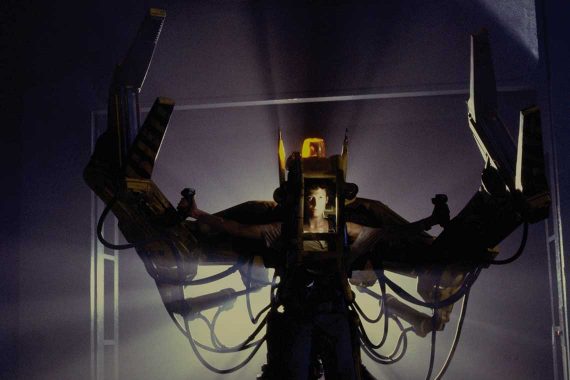
Awesome! I listening right now, but just wanted to get on here and say BIG THANKS for doing the crossover of one of my favorite directors and one of my favorite authors 🙂
Nice! I read “Survivor” a while back and holy crap what an experience. Chuck Palahniuk is from another planet, haha.